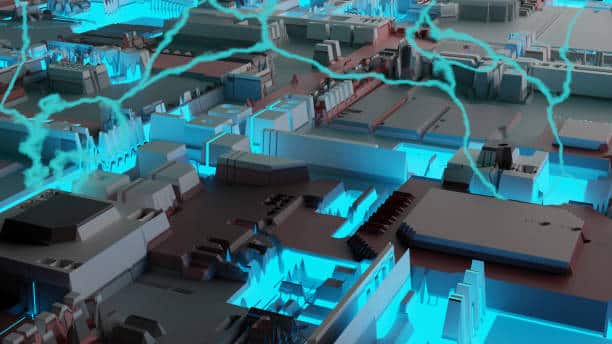Presentation
Man-made brainpower (simulated intelligence) is changing ventures around the world, and structural plan is no exemption. As man-made intelligence keeps on developing, it reshapes the scene of engineering, empowering planners to investigate inventive plan prospects, smooth out work processes, and make more maintainable and effective designs. This article digs into how man-made intelligence is changing compositional plan, covering different viewpoints, for example, generative plan, building data demonstrating (BIM), maintainability, and that’s just the beginning.
The Ascent of Generative Plan

Generative plan is one of the most pivotal uses of artificial intelligence in engineering. This approach use calculations to create a large number of plan choices in view of explicit information boundaries like spatial necessities, natural variables, and material requirements. In contrast to customary plan strategies, where engineers physically make every cycle, generative plan considers the fast creation of various plan arrangements, empowering draftsmen to investigate a more extensive scope of conceivable outcomes and select the ideal plan.
For example, Autodesk’s generative plan programming, Combination 360, enables modelers to enter their standards and get an assortment of plan choices that balance usefulness, style, and supportability. This velocities up the plan cycle as well as encourages inventiveness by introducing unusual arrangements that probably won’t have been thought of as in any case. Accordingly, generative plan is changing the manner in which designers approach critical thinking and advancement.
Improving Structure Data Demonstrating (BIM)
Building Data Displaying (BIM) is another region where simulated intelligence is taking huge steps. BIM includes making computerized portrayals of structures that coordinate different perspectives like math, spatial connections, and properties of building parts. Computer based intelligence upgrades BIM via mechanizing routine assignments, further developing exactness, and working with better joint effort among partners.
Man-made intelligence controlled apparatuses can dissect BIM information to recognize potential issues right off the bat in the plan cycle, like conflicts between underlying components and mechanical frameworks. This prescient capacity decreases the gamble of expensive adjustments during development. In addition, simulated intelligence can robotize the age of development reports and timetables, fundamentally lessening the time and exertion expected from designers and architects. By improving BIM, computer based intelligence smoothes out the whole lifecycle of a structure project, from origination to destruction.
Feasible Plan and Energy Effectiveness
Supportability is a basic worry in contemporary engineering, and artificial intelligence is assuming a pivotal part in advancing harmless to the ecosystem plans. Computer based intelligence calculations can break down huge measures of information to improve building execution, diminish energy utilization, and limit ecological effect. For instance, computer based intelligence can recreate different plan situations to decide the most energy-effective setup of a structure’s direction, materials, and frameworks.
Besides, artificial intelligence can coordinate information from natural sensors to screen and change building tasks continuously. This ability is especially important for shrewd structures, where man-made intelligence driven frameworks can advance warming, cooling, lighting, and ventilation in view of inhabitance examples and atmospheric conditions. By improving energy proficiency and diminishing waste, man-made intelligence adds to the formation of feasible and versatile metropolitan conditions.
Working with Metropolitan Preparation
Metropolitan arranging is a mind boggling task that includes adjusting the requirements of different partners while considering elements like populace development, framework, and ecological effect. Man-made intelligence is changing metropolitan preparation by giving complex instruments to information investigation and reenactment. These devices can handle huge datasets, including segment data, traffic examples, and land use, to create prescient models that guide in navigation.
Simulated intelligence can likewise work with public support in metropolitan arranging processes. For example, artificial intelligence driven stages can examine online entertainment information and public criticism to measure local area feeling and inclinations. This data can assist metropolitan organizers with making plans that better mirror the requirements and wants of occupants. By utilizing simulated intelligence, metropolitan organizers can make more bearable, proficient, and supportable urban areas.
Further developing Development The board

Development the board is full of difficulties, including plan delays, financial plan overwhelms, and wellbeing concerns. Artificial intelligence is resolving these issues by upgrading project the board abilities and enhancing site wellbeing. Computer based intelligence controlled project the executives programming can dissect authentic information to foresee possible postponements and cost invades, permitting supervisors to go to proactive lengths to relieve chances.
As far as wellbeing, simulated intelligence driven frameworks can screen building locales progressively, distinguishing risks and guaranteeing consistence with security guidelines. For instance, PC vision innovation can identify perilous ways of behaving, like specialists not wearing defensive stuff, and ready managers right away. By further developing development the board, computer based intelligence guarantees projects are finished on time, inside spending plan, and with a more significant level of wellbeing.
Customizing Building Plans
Computer based intelligence is additionally empowering more customized engineering plans custom-made to individual inclinations and requirements. Through AI, man-made intelligence frameworks can break down client information, for example, way of life propensities and tasteful inclinations, to make tweaked plan arrangements. This personalization reaches out past private structures to incorporate business and public spaces, guaranteeing that conditions are intended to improve the client experience.
For instance, man-made intelligence can examine how individuals collaborate with a space and recommend changes to further develop usefulness and solace. In a business setting, this could include streamlining the format to work with better client stream and increment deals. In a private setting, man-made intelligence can propose configuration includes that line up with the mortgage holder’s everyday schedules and inclinations. By customizing engineering plans, computer based intelligence guarantees that structures are utilitarian as well as resound with their tenants.
Altering Redesign and Reclamation
Remodel and rebuilding projects present one of a kind difficulties, frequently including more seasoned structures with verifiable importance. Man-made intelligence is changing these activities by giving instruments that can break down and decipher verifiable information, underlying trustworthiness, and material circumstances. For example, simulated intelligence driven programming can filter and make nitty gritty 3D models of existing designs, distinguishing regions that require fix or support.
Also, man-made intelligence can help with safeguarding the verifiable legitimacy of structures by proposing materials and procedures that match the first development. This is especially significant for legacy locales, where it is critical to keep up with authentic exactness. By upgrading redesign and reclamation processes, artificial intelligence helps protect engineering legacy while guaranteeing that more established structures satisfy present day guidelines of wellbeing and usefulness.
Smoothing out Plan Cycles
The structural plan process includes various stages, from introductory idea advancement to nitty gritty drawings and determinations. Man-made intelligence is smoothing out these cycles via computerizing dreary undertakings and giving insightful plan help. For instance, simulated intelligence driven plan programming can mechanize the production of point by point floor plans and heights in light of starting representations, essentially lessening the time and exertion expected from designers.
Besides, computer based intelligence can aid material choice by dissecting the properties and expenses of different choices and proposing the most reasonable materials for a given task. This ability speeds up the plan cycle as well as guarantees that materials meet execution and monetary necessities. By smoothing out plan processes, simulated intelligence permits designers to zero in additional on imagination and advancement.
Upgrading Joint effort and Correspondence
Powerful joint effort and correspondence are fundamental for the outcome of design projects, which frequently include different partners, including planners, architects, workers for hire, and clients. Man-made intelligence is improving coordinated effort by giving stages that work with constant correspondence and data sharing. For instance, computer based intelligence controlled project the executives instruments can incorporate with BIM programming to give a unified stage where partners can access exceptional task data and team up on plan choices.
These stages can likewise utilize regular language handling (NLP) to dissect correspondence designs and recognize possible errors or clashes from the beginning. By further developing cooperation and correspondence, computer based intelligence guarantees that ventures run as expected and that all partners are lined up with the undertaking’s objectives and prerequisites.
Future Possibilities and Difficulties

While computer based intelligence is without a doubt changing building plan, it likewise presents provokes that should be tended to. One of the primary worries is the expected loss of occupations because of mechanization. As computer based intelligence assumes control over routine undertakings, there is a gamble that a few jobs inside the design calling might become outdated. In any case, all things considered, artificial intelligence will set out new open doors for modelers to take part in additional imaginative and vital parts of plan.
Another test is the moral contemplations encompassing artificial intelligence in engineering. As man-made intelligence frameworks become more engaged with direction, it is critical to guarantee that they are straightforward and that their choices are fair and impartial. This requires continuous innovative work to make simulated intelligence frameworks that can be relied upon and that work inside moral rules.
Planning ahead, the possibilities for simulated intelligence in structural plan are extraordinarily energizing. Propels in simulated intelligence innovation are probably going to prompt considerably more complex plan devices and cycles, empowering engineers to push the limits of what is conceivable. From making more manageable and versatile structures to upgrading the client experience through customized plan, simulated intelligence can possibly change engineering in manners we can start to envision.
End
Computer based intelligence is reforming compositional plan by presenting new apparatuses and processes that upgrade inventiveness, effectiveness, and maintainability. From generative plan and BIM to metropolitan preparation and development the board, computer based intelligence is reshaping each part of the structural calling. While challenges stay, the expected advantages of simulated intelligence in design are huge. As innovation keeps on advancing, modelers will have much more chances to make inventive and significant plans that address the issues of our quickly impacting world.

